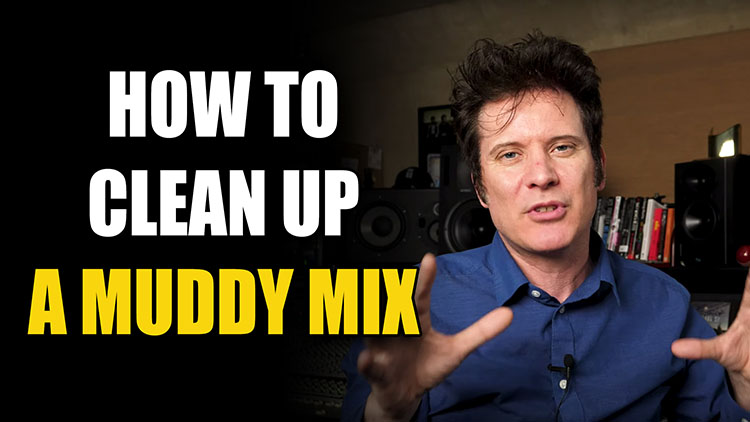There is a lot of confusing information out there when it comes to how you should go about cleaning up a muddy mix. In the tips that follow, we will go over how to clean up your mix to make sure you get a crystal clear mix with great definition and pumping low end!
There is also a cheat sheet to go with this video, so make sure you download that so you can have these tips on hand all the time!
Click here to download the cheat sheet!
1. Great Production Creates Great Mixes
If you listen to The Beach Boys album ‘Pet Sounds’ you’ll hear a masterpiece of production! Due the limitations of tracks, only 4 or at most 8, when artists such as The Beatles or The Beach Boys made albums they had to shape multiple sounds and parts perfectly before they could bounce them together, parts and sounds could not be undone, so they had to be right! Recording the right sounds and parts that support each other is not only great production it, will also make the final mix much easier to do!
2. Using Virtual Instruments Gives Different Results Than Organic Instruments
Virtual Instruments Will Not Have the Huge Dynamic EQ issues that Organic instruments can have. Real, mic’d up instruments can have the issue of players moving so the mic placement varies, giving you wildly varying EQ (boominess from sound holes or F holes of some instruments) or overly dynamic performances. However, virtual instruments are perfectly recorded and can easily be manipulated, with basic, simple midi adjustments to sound like they have been consistently performed. With organic instruments you’re often going to find yourself applying more compression and corrective EQ, sometimes even using dynamic EQs or Multiband compressors.
3. Muddiness Comes from two main areas, firstly Low End Build Up.
Excessive low end is easy to fix with proper High Passing, decide what you want the real low end to be, is it a super low Sub Bass line with a Kick shelved around 100Hz, more of a thump? Or is it a huge low Sub Kick with a bass line sitting above it? Or is it both where a side chain compressor ducks the excessive low build up from two sources of low end hitting at the same time. Find the fundamental of sound, such the low end on your electric guitars and boost that area, cut immediately below it, bypass the EQ and you’ll realise that even though low end has been cut, the new EQ settings increase the fullness of the guitar sound but leave space for the Bass and Kick Drum to shine!
4. Second Area of Build Up: the Low Mids.
Drums in particular can get a lot of low mid build up. On their own, soloed that may not be that much of an issue. However, in a fairly dense track that will really add to the overall muddiness. Typically scooping out low mids of Toms, The Kick Drum (Bass Drum), Overheads and Room Mics at around 350hz (roughly an area between 250-450hz) with a fairly wide Q will really open up the drums leaving room for low mids on other instruments, such as guitars which benefit from the fullness of low mids.
Listen to your whole mix to find areas where low muds start to build up, don’t be afraid to high pass high lines that don’t need low end or low mids. Large amounts of Synth Pads and raked guitars so over do the Low Mid Area so be careful not to boost the low kids in every pad, string part or rhythm guitar!
Watch the full video below to learn more about cleaning up a muddy mix!
